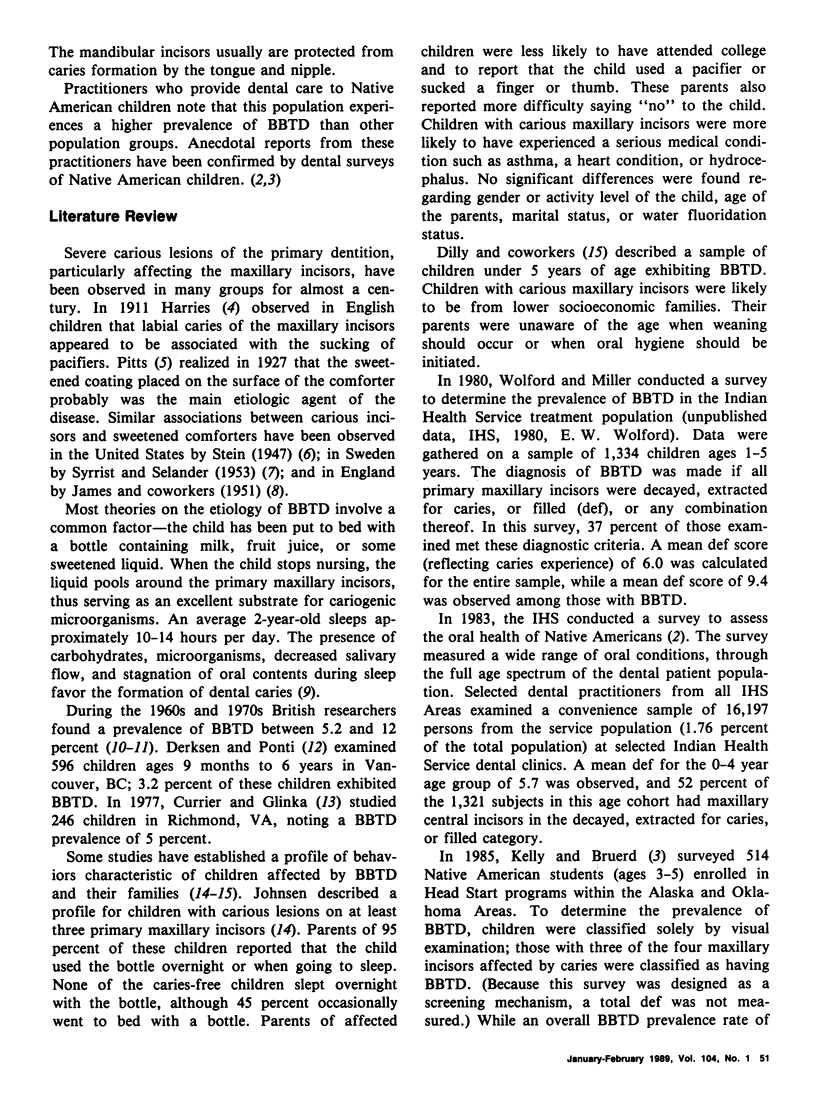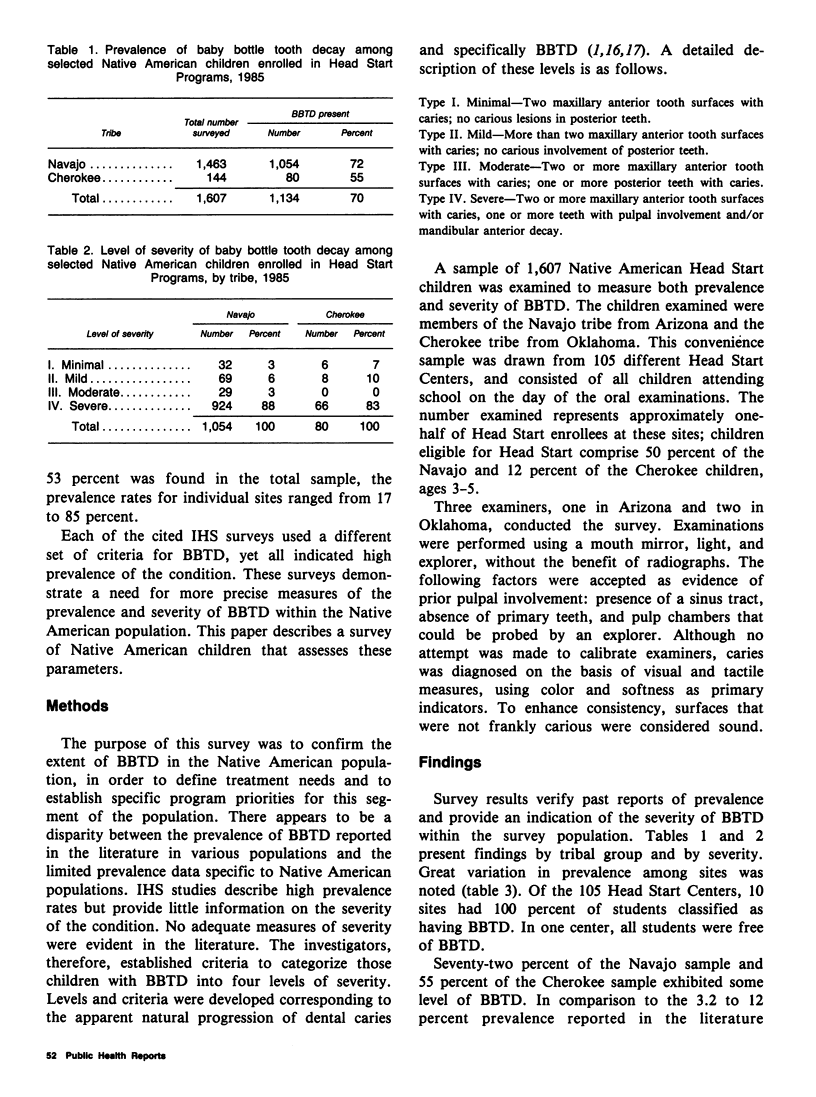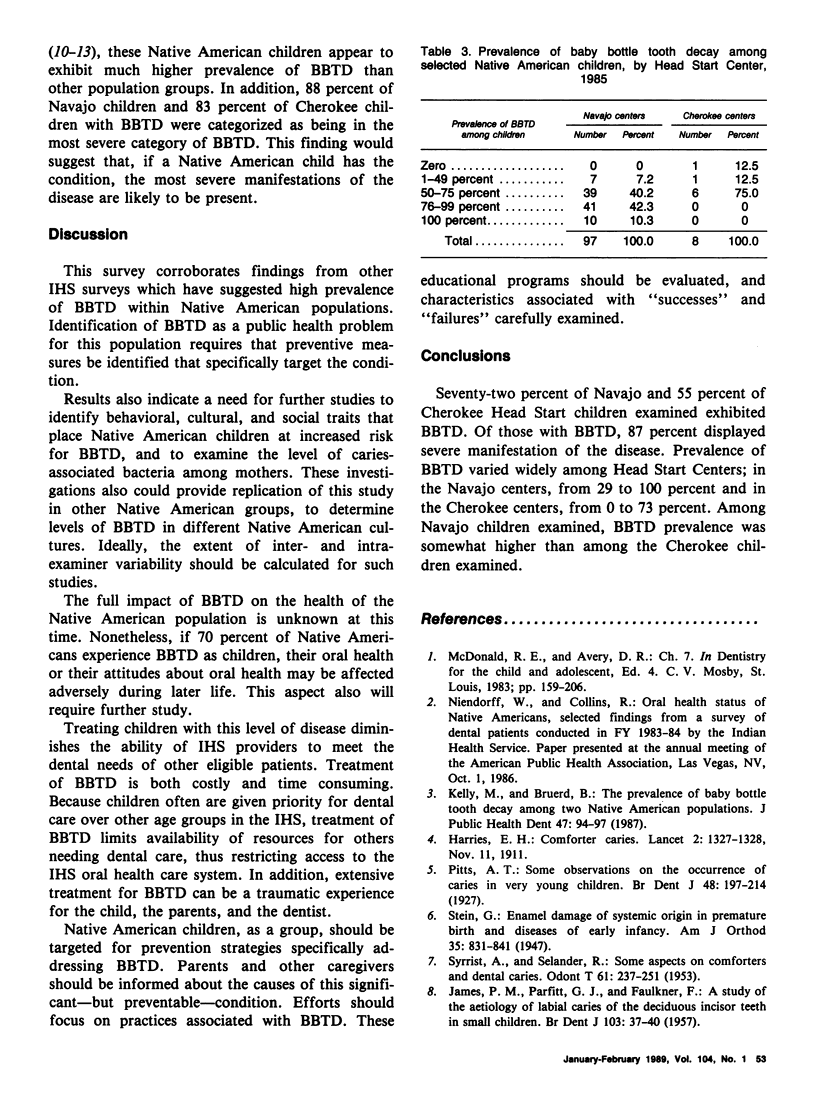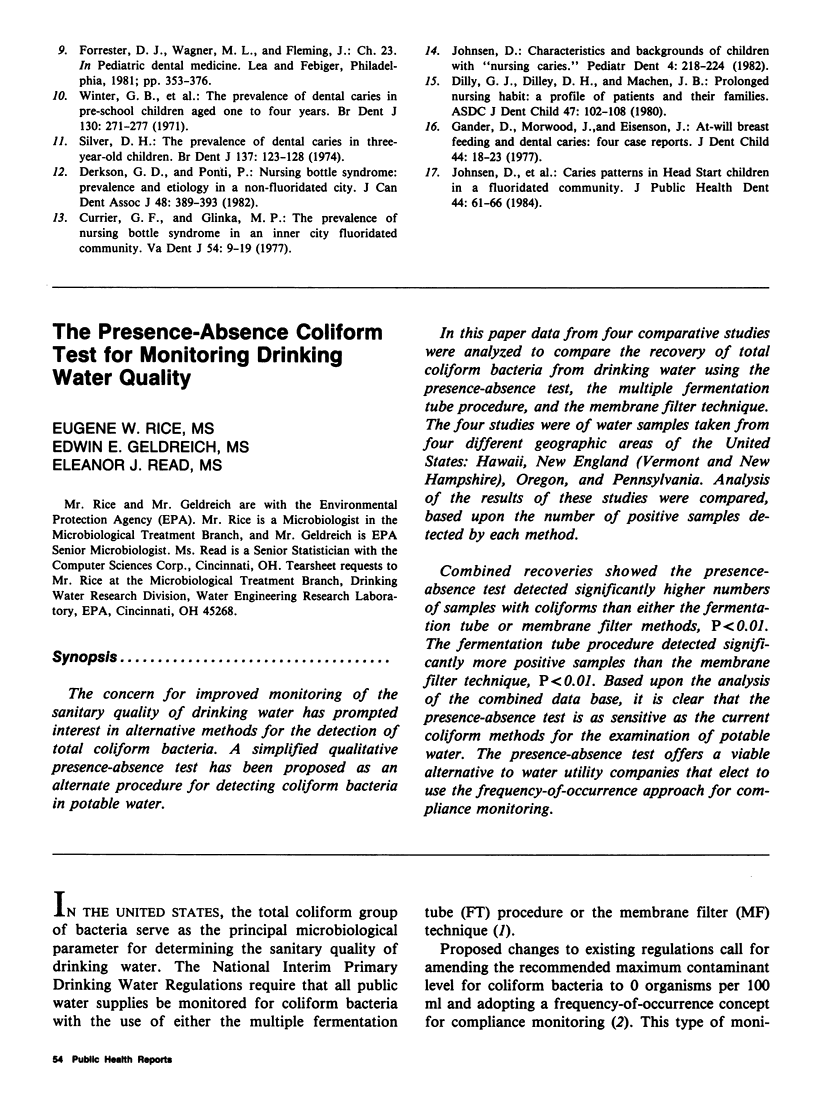Abstract
Baby bottle tooth decay is a unique pattern of dental caries (tooth decay) affecting the dentition of young children. It is associated with the practice of putting the child to sleep with a nursing bottle filled with liquid that contains sugar. Practitioners who treat Native American children have noted that this population suffers from a high prevalence of the condition. In order to establish specific program priorities and treatment needs for this segment of the Native American population, additional information is required on both prevalence and severity of baby bottle tooth decay. In this survey, an overall prevalence of 70 percent was observed when Navajo and Cherokee Head Start students ages 4-5 years were examined. Of the children affected by baby bottle tooth decay, 87 percent displayed the most severe manifestation of the disease. The prevalence of this disease in these Native American children appears to be substantially higher than in other populations. Further study is needed to identify the factors contributing to this difference in prevalence and to identify effective measures for reducing the occurrence of baby bottle tooth decay among Native Americans.
Full text
PDF




Selected References
These references are in PubMed. This may not be the complete list of references from this article.
- Currier G. F., Glinka M. P. The prevalence of nursing bottle caries or baby bottle syndrome in an inner city fluoridated community. Va Dent J. 1977 Oct;54(5):9–19. [PubMed] [Google Scholar]
- Derkson G. D., Ponti P. Nursing bottle syndrome; prevalence and etiology in a non-fluoridated city. J Can Dent Assoc. 1982 Jun;48(6):389–393. [PubMed] [Google Scholar]
- Dilley G. J., Dilley D. H., Machen J. B. Prolonged nursing habit: a profile of patients and their families. ASDC J Dent Child. 1980 Mar-Apr;47(2):102–108. [PubMed] [Google Scholar]
- Johnsen D. C. Characteristics and backgrounds of children with "nursing caries". Pediatr Dent. 1982 Sep;4(3):218–224. [PubMed] [Google Scholar]
- Johnsen D. C., Schultz D. W., Schubot D. B., Easley M. W. Caries patterns in Head Start children in a fluoridated community. J Public Health Dent. 1984 Spring;44(2):61–66. doi: 10.1111/j.1752-7325.1984.tb03049.x. [DOI] [PubMed] [Google Scholar]
- Kelly M., Bruerd B. The prevalence of baby bottle tooth decay among two native American populations. J Public Health Dent. 1987 Spring;47(2):94–97. doi: 10.1111/j.1752-7325.1987.tb01983.x. [DOI] [PubMed] [Google Scholar]
- SYRRIST A., SELANDER P. Some aspects on comforters and dental caries. Odontol Tidskr. 1953 Oct 22;61(4):237–251. [PubMed] [Google Scholar]
- Silver D. H. The prevalence of dental caries in 3-year-old children. Some social differences and a method of assessing pre-school needs at a local level. Br Dent J. 1974 Aug 20;137(4):123–128. doi: 10.1038/sj.bdj.4803255. [DOI] [PubMed] [Google Scholar]
- Winter G. B., Rule D. C., Mailer G. P., James P. M., Gordon P. H. The prevalence of dental caries in pre-school children aged 1 to 4 years. 1. Etiological factors. Br Dent J. 1971 Apr 6;130(7):271–277. doi: 10.1038/sj.bdj.4802662. [DOI] [PubMed] [Google Scholar]


